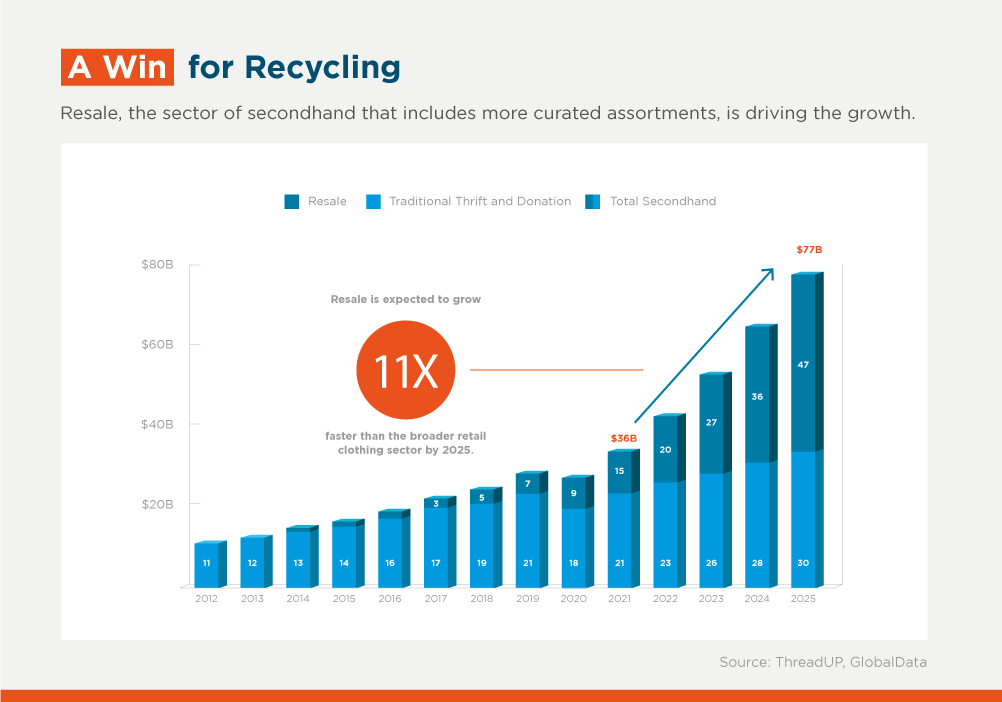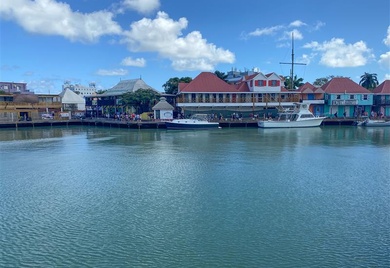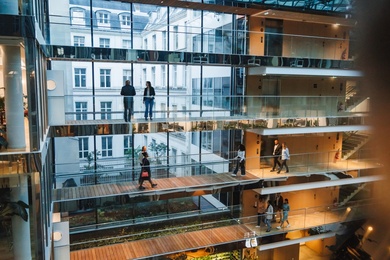Digitalization & Sustainability Come to the Clothing Industry’s Rescue

“Fast fashion” in earnest took off in the early 2000s. You’re probably wearing it now. It entails the quick design, manufacturing, distribution, and marketing of trendy and yet unexpensive clothing. But you should know that fast fashion is creating a huge crisis.
To understand the nature of this crisis, we must understand that apparel retailers now offer an incredibly wide array of styles with a rapid turnaround of new collections, never seen before. Buying clothes is now a hobby, and our wardrobes have never been so full.
This spendthrift consumerism comes with massive environmental damage. Already in 2015, the documentary “The True Cost” highlighted some troubling facts: across the world 80 billion pieces of clothing are bought each year, and fashion is the second largest contaminator after oil and gas. According to the Ellen MacArthur Foundation, the fashion industry is responsible for 10% of global CO2 emissions each year. It is also the second largest consumer of water, and one of its main polluters. Alarmingly, the industry consumes 25% of chemicals produced globally.
In the US alone, the average person throws out over 35 kgs of clothes every year. Half of new clothes get discarded within 12 months, and people have four times more garments than in the 1980s! Yet the main source of waste comes from manufacturers and retailers getting rid of unwanted and unsold stock, considering that fashion overproduces by more than 30% each year. To make matters worse, 85% of textiles get burned or end up in landfills. Chile’s Atacama region is a victim of fashion. Every year, 39,000 tons of clothing get dumped in the desert.
Social externalities are just as troubling. One in six people worldwide work in the fashion industry, and an overwhelming majority are women. They are often underaged and earn a pittance. Work conditions can also be dangerous, both upstream with farmers and further down the value chain in manufacturing facilities.
In Latin America and the Caribbean, fashion represents close to 2% of GDP, and it grows exponentially. The biggest markets are Brazil and Mexico, with Peru and Colombia experiencing very fast growth. Interestingly, the region shows potential on some fronts, including the use of natural fibers and the prevalence of artisan work and high participation of MSMEs. Unfortunately, there is still poor integration of regional value chains.
Trouble in the apparel industry calls for the attention of the international development community. The topics to address are many, from decent working conditions, competitive wages, to promoting a more efficient use of resources, upgrading sustainable agricultural practices, and fostering the circular economy, with re-use of materials.
By 2025, sales of used clothing are expected to grow eleven times faster than the broader retail clothing sector, reaching $77 billion in global revenue. This is part of a global response that started during the pandemic, when awareness rose about more sustainable models, especially among GenZs. New digital business models address fast fashion’s shortcomings. Enabled by mobile broadband and smartphones, used clothes digital marketplaces are attracting exponential interest from cash-strapped or sustainability-conscious buyers and sellers. These business models also have strong support from the venture capital community.

In the US, Poshmark, backed by investors such as Menlo Ventures, GGV Capital, among others, is a social marketplace with a mission to make shopping the resale of clothing simple and fun. After raising over $150 million in equity, it is now a listed and worth over 1.2 billion! Depop, a leading re-commerce player raised over $100 million through various rounds from sophisticated venture capital funds including General Atlantic. It was acquired by ETSY last year for $1.6 billion, a multiple of 25x revenues.
ThredUP is a similar digital marketplace with strong backers, including Redpoint Ventures and Highland Capital. It completed an IPO in 2021. Its stated aim is to inspire a new generation of consumers to think “secondhand first”. Tradesy, backed by Kleiner Perkins Caufield & Byers, Northgate Capital and Richard Branson, is a peer-to-peer digital platform focusing on higher end brands. Wearwell and Good On You go a step further in verifying the sustainability claims of brands and compiling sustainable products into one-stop shops.
Latin America is also seeing this transformation, albeit at an earlier stage. The opportunity is fuelled by record volumes of venture capital and talented local entrepreneurs with a social mandate. In Brazil, online marketplace Enjoei IPO’ed in 2021. And in Mexico and Colombia, GoTrendier is clearly the “go-to” resale marketplace, boasting over 10 million items in stock.
Digital marketplaces -and all the “behind-the-scenes” tech players that power these transactions- are disrupting traditional sectors through innovation, efficiency and inclusion. Clothes resale marketplaces have key advantages over their brick-and-mortar counterparts. Artificial Intelligence tools allow for a unique and personalized user experience based on tastes and preferences. Platforms do not carry inventory nor incur in storage costs. Thousands of feet of expensive physical real estate are thus replaced by one square inch app on a smartphone. Buyers (and sellers) do not travel, since logistics (and payments) are managed through the app.
Success is now defined by the “sustainability” of the business model. Resale digital marketplaces help lower costs for buyers. They also provide additional income for sellers, considering that until recently the value of your clothes dropped to zero the moment you walked out of the store. The resale model is extending the lifecycle of clothes, promoting the “circular economy”. According to ThredUP, the sector has the potential to cut over 140 million tons of greenhouse gas emissions in 2030.
Interestingly, many fast fashion retailers have jumped onto this bandwagon too. Among many others, H&M invested in second-hand marketplace Sellpy, while Benetton partnered with Depop. Platforms are seizing this interest by offering “resale-as-a-service” so that established brands can promote circular options, such as Adidas through ThredUP. Some brands are pushing their own solutions: Nike Refurbished takes shoes returned by customers after 60 days and preps them for resale at lower prices. Patagonia’s Worn Wear encourages repair, trade-in, and recycling of its products.
It is clear that fashion is reinventing itself and must continue to develop innovative production systems, materials and business models that allow clothes to have less impact on the environment, to be worn longer and be turned into new clothes when they are no longer needed – the underpinnings of the circular economy applied to the fashion segment. Clothing resale digital platforms have a triple impact: they generate economic, social and environmental value. They represent a model that is worth keeping track of. Take note, and dress accordingly!
LIKE WHAT YOU JUST READ?
Subscribe to our mailing list to stay informed on the latest IDB Invest news, blog posts, upcoming events, and to learn more about specific areas of interest.
Subscribe



